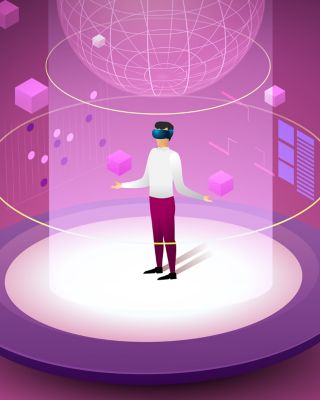

Monitoring, Modeling and The Metaverse
Can the virtual world streamline your ops?
In some form or another, The Metaverse has existed for quite some time. The virtual world of Second Life has been around since the early 2000s. Pokémon GO merged elements of the physical and digital worlds. Concerts and ‘live events’ have been happening in Fortnite for quite some time now.
Virtual and augmented reality have definitely made their mark on gaming and entertainment. You could even argue that it’s radically changed the face of both. So it makes sense that when we read or view anything about The Metaverse, we categorize it as something to play with and in. Certainly it won’t affect the way we manage our industrial companies…right?
Wrong. In fact, The Metaverse is set to transform many, many aspects of our work life. The practical applications are numerous and exciting.
Meet Me in the Metaverse
The most obvious work application is the ability to host virtual meetings. Facebook has already begun developing virtual meeting spaces and avatars with it’s Horizon Workrooms. Staff can plug in their VR headset from anywhere in the world and feel like they are sitting right next to the avatar of their colleague. One who might be countries, even continents, away.
Think of it as 3D version of a Zoom call, where you don’t ever have to worry about ironing your clothes or combing your hair. A few clicks of the mouse and you can look like and wear whatever you want.
The idea is that apps like these will provide a truly hybrid solution to these ever-more-remote times. One that makes distant workers feel more connected and lets managers feel like they have their employees “presence” and attention. Whether that sense of increased connection truly happens remains to be seen.
Meta-Maintenance
Another feature of The Metaverse is that of “A Digital Twin”. Aptly named, a digital twin is just what it sounds like: a copy of any physical assets or processes set in a virtual environment. What’s the point? There are several.
Risk reduction and staffing savings are just two. Consider an oil rig, located in the middle of the ocean. To keep costs and risks at a minimum, essential workers are only allowed physically to work on the rig. This could include drillers, derrickmen and – until recently – maintenance staff. But by leveraging a digital twin system and pairing it with onboard robotics, maintenance can be performed by a remote worker, possibly thousands of miles away. Less manpower on the rig means less risk to human safety and less budget spent on sending skilled maintenance staff out, every time something breaks.
Enter the Simulation
Speaking of skilled labor, let’s talk training. We’ll stick with the oil rig example. Training someone to operate and maintain an oil rig is both risky and costly if you let unskilled trainees loose on the physical rig itself. The stakes are simply too high for any (understandable) but potentially catastrophic mistakes that are usually made during training. Plus – training in person requires both the trainee and the trainer to be on site, doubling both the risk and the cost.
The solution resides in the virtual world. Just as unskilled pilots would never think to hop in a jet and hope for the best, oil rig operators should never make their untrained mistakes in the real world. Instead, pilots work their mistakes out in a flight simulator and the oil rig trainee can too. By leveraging a training simulator via digital twins, the trainee can “experience” all kinds of real-world scenarios and learn how to handle them safely and efficiently.
This is also a much more scalable way for organizations to maintain workforce competency. Unlike the one on one training model, building a virtual training environment allows experienced workers who are phasing out of the workforce to transfer their knowledge on to many more trainees. And when one on one training does need to happen, it also allows these experienced workers the ability to train long-distance, via virtual reality. The opportunities for industrials to leverage the virtual world seem endless. The Metaverse can streamline your ops, make meetings more productive and connected, safeguard your people, upskill your workforce and lower your spending.
Not bad for “just a game”.
Learn more about how digital twins are deployed in an industrial environment, including project analysis, decision making, design validation and operational readiness. Download our whitepaper “Practical Applications of a Dynamic Digital Twin” now.

